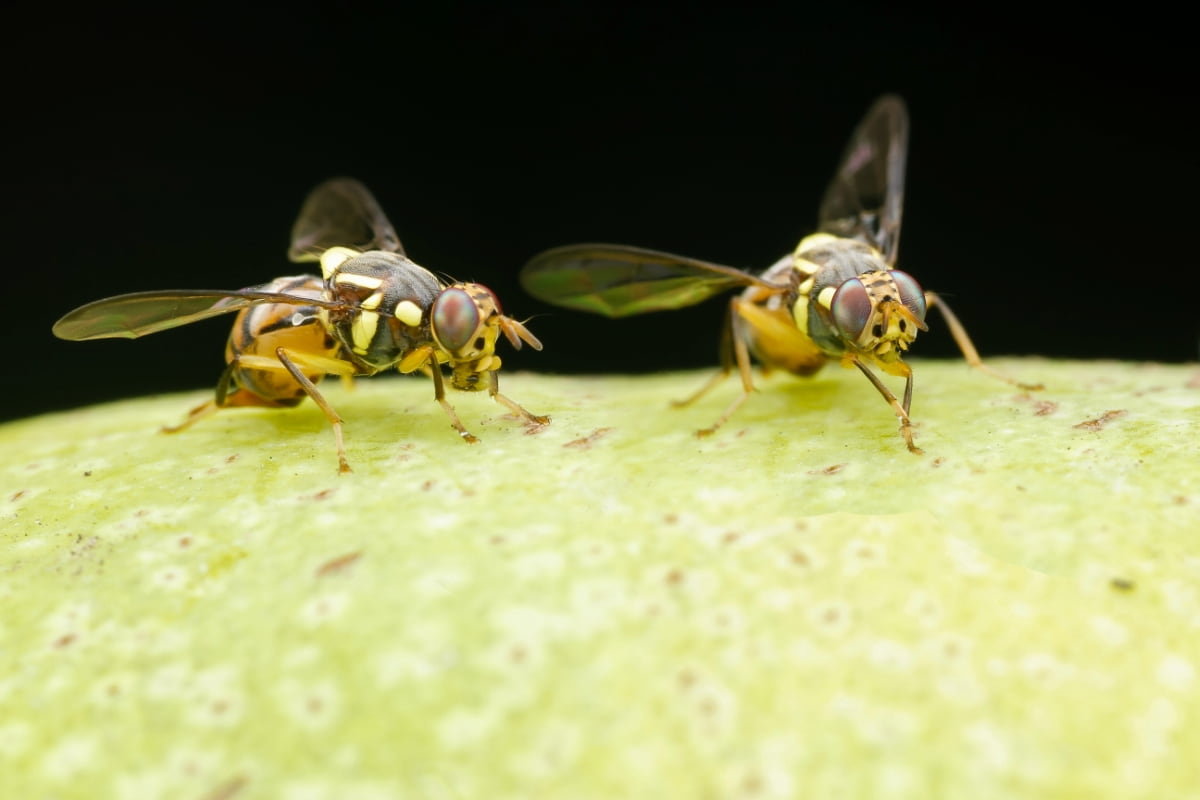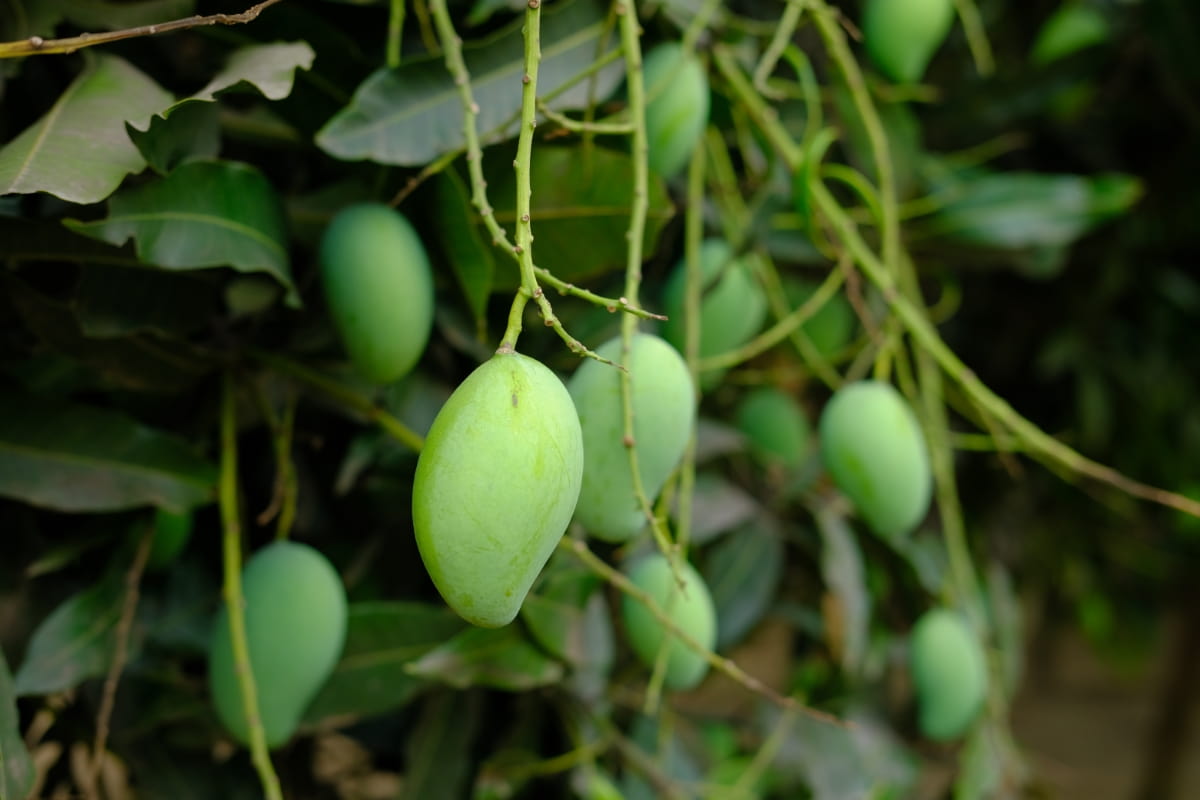Mango cultivation faces fruit fly infestation, affecting yield and quality. Effective control is crucial for a thriving orchard. This guide explores strategies for managing fruit flies, prevention methods, and organic solutions. Understanding the fruit fly life cycle is essential for targeted intervention. Biological control measures and sustainable pest management practices are also discussed. Protecting mango crops from fruit flies ensures a bountiful harvest while embracing organic solutions promotes eco-friendly practices.

Fruit Fly Management in Mango
Introduction to Fruit Flies
Fruit flies are small insects that belong to the order Diptera and the family Tephritidae. They are also known as true fruit flies or tephritid fruit flies. They are different from the common fruit fly (Drosophila melanogaster) that is often found in kitchens. Fruit flies are pests of many fruits and vegetables, especially mangoes, guavas, citrus, bananas, and tomatoes. They lay their eggs inside the fruit, where the larvae feed and cause damage.
Fruit flies are yellowish-brown in color, with red eyes and dark markings on their thorax and abdomen. They have a pair of wings that are patterned with bands or spots. Their body length ranges from 3 to 10 mm, depending on the species. Fruit flies have a piercing-sucking mouthpart that they use to puncture the fruit skin and inject saliva that softens the flesh.
They also have an ovipositor that they use to insert their eggs into the fruit. The eggs are white, oval, and about 1 mm long. Mangoes are affected by various fruit flies, including the mango fruit fly (Ceratitis cosyra), Mediterranean fruit fly (Ceratitis capitata), Natal fruit fly (Ceratitis rosa), and Oriental fruit fly (Bactrocera dorsalis). These species vary in distribution, host range, biology, and behavior.
The mango fruit fly, native to Africa, is the most destructive pest in sub-Saharan Africa. The Mediterranean fruit fly, native to Europe, has spread to Africa, Asia, Australia, and America. The Natal fruit fly is mainly found in southern Africa. The Oriental fruit fly, native to Asia, has invaded many countries in Africa, Asia, Oceania, and America.
Life Cycle of Mango Fruit Flies
The life cycle of mango fruit flies consists of four stages: egg, larva, pupa, and adult. The female fruit fly lays mostly eggs inside the fruit, usually near the stem end or in cracks or wounds. They generally lay up to 300 eggs in their lifetime, with 10-20 per fruit. The larvae, white, legless grubs, feed on the fruit pulp, creating tunnels and cavities that cause it to rot and fall off the tree. They grow through three instars and last 8-20 days.
The mature larvae exit the fruit and drop into the soil or leaf litter, where they burrow into the ground or form cocoons. The pupal stage lasts 10-30 days. The adult flies emerge from pupae, mate, feeding on nectar, honeydew, or plant sap. They can live for several weeks or months, depending on environmental conditions.
Impact on Mango Crops
Mango fruit flies are a significant pest that damages mangoes by laying eggs inside, resulting in larvae that feed on the pulp, causing fruit drop, rotting, and reduced marketability. They can also transmit fungal and bacterial diseases, affecting the fruits’ quality and shelf life. The economic losses caused by mango fruit flies are estimated in billions of dollars annually.
Average yield loss of 23% in Africa, 24% in Asia, and 14% in Latin America. The losses are higher in areas with endemic pests and inadequate control measures. Infested mangoes have holes, scars, and bruises, making them unattractive to consumers. They are also prone to spoilage and decay due to fungal and bacterial infections, affecting their nutritional value and lower sugar content.
Identification of Infestation and Damage Symptoms
Mango fruit fly infestation can be identified by observing signs such as adult flies, eggs or larvae inside the fruits, small punctures or oviposition marks on the fruit skin, sap or resin oozing from the skin due to larvae feeding on pulp, frass, or excrement on the fruit surface or near the oviposition marks, and exit holes on the fruit skin. These signs indicate that the larvae have completed their development and have emerged from the fruits, and the infestation is a serious health concern.
Infestation in mangoes can be detected by premature ripening, softening, splitting, dropping, and molding. These symptoms are more noticeable in mature fruits, as they are more affected by the fruit fly species involved. The signs can be influenced by the stage of fruit development and the fruit fly species involved. Mango fruit flies are distinct from other pests due to their morphology, behavior, and damage symptoms. Common pests include:
- The mango seed weevil lays eggs inside mango seeds.
- The mango gall midge lays eggs on young leaves, shoots, and flowers.
- The mango hopper, which sucks sap from young leaves, shoots, flowers, and fruits, causing wilting, curling, yellowing, and dropping. These pests can cause significant damage to mangoes.
In case you missed it: How to Grow Katimon Mango: Planting and Cultivation of Thailand All Time Catimon Mango

Preventive Measures for Fruit Fly Management in Mango
Mango fruit fly control involves reducing the pest’s population and activity, as well as protecting the fruits from infestation. Preventive measures include cultural practices like selecting resistant cultivars, pruning and thinning trees, harvesting fruits at the right maturity stage, and disposing of infested or fallen fruits properly.
Sanitation methods involve removing breeding sites, such as rotten fruits, compost heaps, garbage dumps, and animal manure, to reduce food and shelter availability for the pest. Natural predators and biological control involve encouraging and conserving natural enemies of the pest, such as parasitoids, predators, and pathogens.
Biological control uses living organisms to suppress or regulate the pest’s population, which can be native or introduced. Parasitoids insects that lay eggs inside or on the host, which they eventually kill. Predators are animals that feed on their prey, which they usually kill or injure. Pathogens are microorganisms that cause disease or infection in another organism, which they usually weaken or kill. Examples of pathogens affecting fruit flies include bacteria, fungi, viruses, and nematodes.
Chemical Control Strategies
Chemical control involves using insecticides like malathion, dimethoate, fenthion, and spinosad to combat fruit flies. However, this approach has drawbacks, including resistance development, environmental pollution, and harm to non-target organisms. Thus, chemical control is recommended as a last resort and in conjunction with other management methods.
Recommended Insecticides
- Malathion: A short-residual, relatively safe option.
- Dimethoate: Longer residual period but more toxic.
- Fenthion: Moderate residual period and toxicity.
- Spinosad: A biopesticide with a long residual period.
Application Techniques and Safety
Various techniques like foliar spray, soil drench, and bait stations are employed, each with specific application methods. Safety measures include wearing protective gear, following dosage recommendations, and adhering to application guidelines to minimize environmental impact.
Integrated Pest Management (IPM)
IPM combines monitoring, cultural, physical, biological, and chemical control methods. Monitoring involves regular orchard inspections, while cultural control emphasizes good agricultural practices. Physical control includes barriers and traps, while biological control deploys natural enemies. Chemical control is a last resort and follows IPM principles.
In case you missed it: Cost of Drip Irrigation Per Acre for Mango Plantation: Exploring Installation Costs Along with Subsidy

Case Studies and Success Stories
Examining successful IPM implementations worldwide, including projects in Pakistan, Kenya, and India, demonstrates the efficacy of comprehensive strategies in reducing fruit fly infestation and improving mango yield and quality.
Challenges and Resistance
Challenges in mango fruit fly control include a need for more awareness, limited access to information, and coordination issues. The guide also addresses the development of resistance to pesticides and its implications.
In case you missed it: How to Prune a Mango Tree and When to Prune Mango Trees

Conclusion
Effective mango fruit fly management demands a multifaceted approach. Identification through regular monitoring is crucial. Employing natural control strategies and integrated pest management enhances sustainability. Chemical control, while a last resort, requires judicious application. A comprehensive strategy ensures a thriving mango orchard with minimized fruit fly impact.
- Feed Your Flock for Less: Top 10 Tips to Save on Chicken Feed
- Ultimate Guide to Ossabaw Island Hog: Breeding, Raising, Diet, and Care
- Hatching Answers: The Top 10 Reasons Your Chickens Aren’t Laying Eggs
- Eggs and Economics: Breaking Down the Cost of Raising Backyard Chickens
- Defend Your Greens: Proven Methods to Keep Iguanas Out of Your Garden
- Ultimate Guide to Cinnamon Queen Chicken: A Comprehensive Guide for Beginners
- Ultimate Guide to California Tan Chicken: Breeding, Raising, Diet, Egg-Production and Care
- Ultimate Guide to Marsh Daisy Chicken: Breeding, Raising, Diet, and Care
- 10 Types of Chicken Farming Businesses You Can Start for Profits